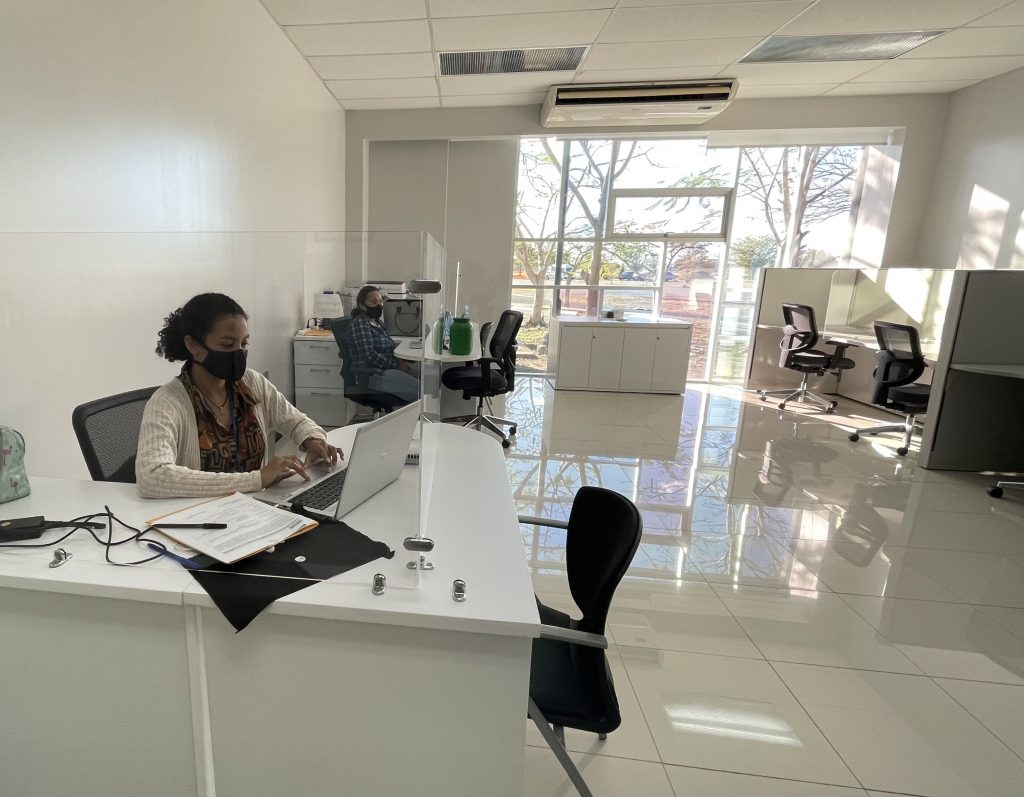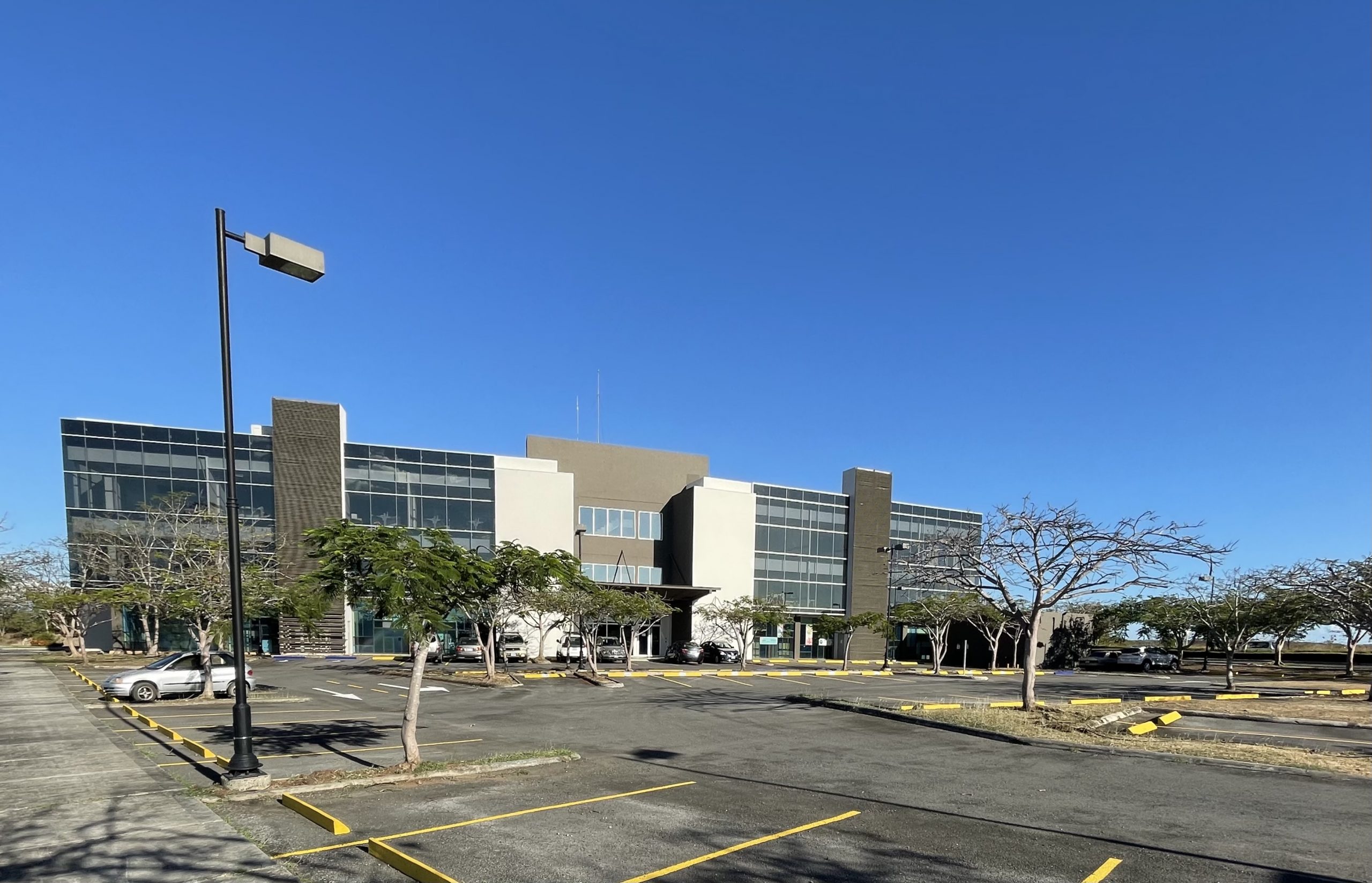
Sykes set up operations in Guanacaste at the end of 2020 and became the first multinational service provider to show a vote of confidence in the diversification of the province’s workforce.
The company’s promise is to generate around 500 jobs throughout the course of 2021, in addition to the just over 100 that it has already hired during 2020. According to Sykes’s director of corporate affairs, Roy Mena, this ambitious goal involves a challenge: finding people with the level of English and the skills required to fill the job openings.
Do we have 500 people who speak a high level of English, with a high school diploma or other technical proficiency who are looking for a job [in Guanacaste]? I don’t know,” Mena said.
Beyond professions, Sykes looks for abilities. Most of the positions are in customer service, but there are also tech opportunities such as programming, cybersecurity and Big Data.
The multinational company is training people from the province to reach a level of command of English for employability, or in other words, to meet the level required to be hired. The requirements are to have completed high school and have more than a basic knowledge of the language.
In March, Sykes will hold a fair at the National Institute of Learning (INA- Instituto Nacional de Aprendizaje) facilities in Liberia to identify about 1,000 people who want to enroll in the academy.
Mena spoke with The Voice of Guanacaste about the company’s plans and initiatives to turn Liberia into “a technological services center” that will serve as an example later on to apply the strategy in places like Limon or Perez Zeledon.
Here is an excerpt from the interview:
-Why did Sykes choose Guanacaste?
We came to Guanacaste then, yes, with the idea of being able to favor the region, of being able to have an impact on society, of being able to have an impact through talent development and to create quality jobs that allow us to have sustainability for our businesses, the ability to continue growing over time and also to have operating costs that are a little lower than in the Greater Metropolitan Area (GMA), where all of the companies fight for the same talent.
-What is the reason for this cost reduction?
Because the turnover rates are lower, so you don’t have to be in that continuous investment of personnel replacement, replacement, replacement, replacement, replacement.
That is one of the biggest weakening factors in our industry. In certain segments, we have up to 50% turnover per year. It’s a lot.
But in Guanacaste, we have a population of more than 400,000 people. Thirty percent of those people are between the ages of 16 and 35. At least half of those people, we are talking about more than 100,000, have completed high school. And of those, more than 50,000 people with high school completed, many are young people who are unemployed.
We have people who speak English, people who sort of speak English halfway, and people who want to learn to speak English, but for the tourism industry, because if they want to learn or they speak English and they want to enter the world of multinational corporate services, they have to go to San Jose.
The industry went from five companies to more than 180 companies, and from those less than 1,000 people to more than 82,000 people who are now bilingual. But it’s all concentrated in the GMA”.
-What specific advances in the province prompted you to set up here?
I think that, in the first place, the presence of public universities is a good move, with free access to education and with social impact programs also, social projection, where people can study some things like English at a more affordable cost.
While it’s true that they don’t move the needle much, because a person who has a low level of English through their two-year programs only reaches the halfway point, but it’s much more affordable than paying an institute.
Another good move is the CTPs, the professional technical colleges. But they aren’t enough.
This government has the best move with the Alliance for Bilingualism (ABi) strategy… It announced 5 billion colones (about $8.4 million) to develop the linguistic and idiomatic abilities of the people who want to do it, through institutes, entities that are accredited and have good programs.
In 2017, we opened the [Sykes] Academy and since then, we’ve admitted about 10,000 people, but with ABi, we signed an agreement in which we guarantee the government the admission of 3,000 people per year for the next four years. We take 40% of the talent that we improve and we release the other 50-60% to the market.

Customer service hires predominate, but there are also opportunities in areas such as scheduling, cybersecurity, and Big Data. Foto: María Fernanda Cisneros
-How does the agreement work?
The first steps of the agreement were taken in 2014, when we saw that four out of 10 candidates told us that they couldn’t accept the offer from the academy because “I need to work. I can’t stay at home like this one more day. They won’t allow me to come home without a job.” And we’re offering them one, two, three, four months of study [without pay].
So, we made the government see that we are creating employment. The industry creates a lot of employment, the supply of talent is low and the demand is high, so we needed them to generate a subsidy for the candidate that we admitted.
And that’s how we put together the agreement. But it went beyond that. We asked that a part of this subsidy come to us [to expand teaching capacity] and to universities or institutes that replicate our model.
We shook hands and since April 2019, the ABi strategy has provided us with the subsidy. In that same year, in 2019, we invited Universidad Invenio to be part of it. They replicated this model, and in alliance also with Solarium, [Liberia’s industrial park], in coordination with CINDE and working with the Ministry of Labor, we created a strategy to start developing the talent that we were going to hire at the end of the year in Guanacaste”.
-Since the end of 2020, how much talent have you located and trained in Guanacaste?
Approximately 3,000 people were reviewed in total, of which about 700 people met the requirements of basic or intermediate English and a high school diploma. But some were starting well below with the 70% level of English and [of these], only one in five finished, which is unfortunate.
-Why did so many drop out of the course?
There was perhaps an issue of expectation. We couldn’t tell people before September that we were going to open operations here. So the way the course was presented was in a very aspirational way: improve your English and improve your chances of employability. But we couldn’t say that we were going to hire them because we still couldn’t inform people, something desirable.
In total, there were 170 graduates, some of whom also didn’t need to work and said that for now, they couldn’t because they are [going to] university or [are involved in] other projects, but next year, they could.
And of those, we had about 100 people who were hired gradually, more I think. We already passed 100 people.
-How many spots are available at the academy?
We started with a virtual campaign, Monday and Tuesday afternoon, [February 8 and 9]. Next month, [in March], we’re going to have a face-to-face fair in one of the INA facilities, together with CINDE and the Ministry of Labor, in order to attract as many people as possible to our operations, but also with the purpose of identifying no less than 1,000 people to attend our academy.
We have 1,400-1,500 spots available for the academy. We’re talking about this year, but INA has to start attracting people for 2022. So INA will be offering another 1,000 or 1,500 spots”.
-Do you think that they’ll fill those spots this time?
Under that logic, yes, we’re thinking that with a greater commitment, with a clearer expectation of employability, we can aim to graduate one out of three, if they start down [at that level]. Remember that if they start above, the graduation rate is much higher.

Sykes’ Liberia offices include a recruiting office on the first floor. Foto: María Fernanda CisnerosPhoto: María Fernanda Cisneros
-Should those interested in entering the academy have a foundation in the language?
More than a foundation, a halfway point. We are talking about people who come for a job. We promote employment, you respond to our call and the evaluations get made.
If we speak in percentage terms, between 85% and 90% is what the industry uses for hiring. We’re talking about 85%.
-How many positions will be created this year?
This year, we have 500 positions. But do we have 500 people who speak a high level of English, with a high school diploma or other technical proficiency who are looking for a job? I don’t know. But there are 500 positions that we are offering and for which we need to find and develop [people].
-Five hundred people this year, in how many months?
We’re talking about how we need to hire 50 people per month. We already have those who graduated in January, and we also have a good number graduating in February, and we’re moving ahead with some little numbers.
But we need to find people who already speak English and people who are also close to that level of English so that their training process is as short as possible”.
-Does the province have the potential to attract more multinational companies?
That is the bet. The bet is not only on creating 600 or more jobs that we have the capacity to do, but to make Liberia the second development center in the country, where other companies similar to ours will join along the way as the human talent exists. And from now to five or 10 years from now, to have the same experience as the GMA.
And that’s why governments have gotten involved in this. That’s why CINDE has been one of the biggest champions, you could say, in this matter. In addition, we have a great strategic partner in Solarium, which has also bet on contributing to this cause within its means to make Liberia that center of development of high tech services that we are looking for.
Is it a romantic subject? No. It has to do with sustainability, which has to do with long-term projection.
The greater metropolitan area is saturated. We have to take business to other places and for Liberia to be the first place where we achieve it to go and replicate it later in Limon, then in Perez Zeledon.





Comments